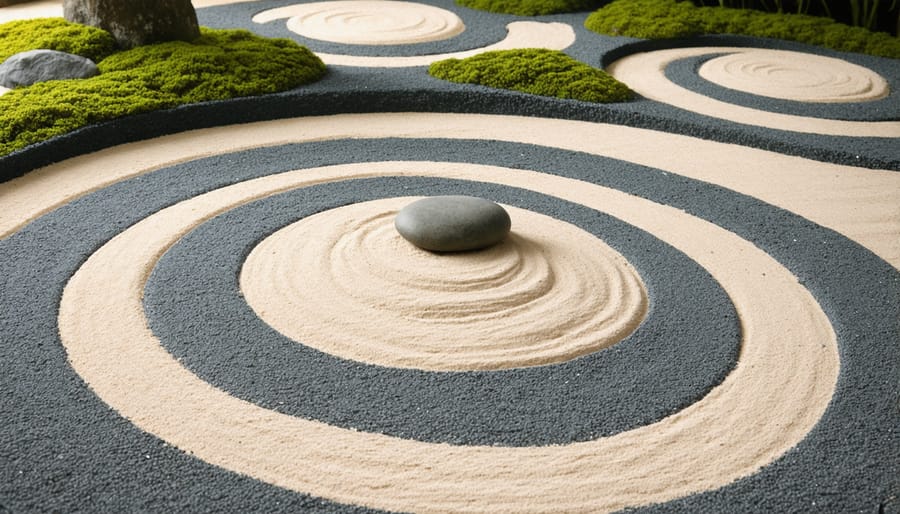
Wellness isn’t just about green smoothies and yoga classes – it’s an intricate dance of seven essential elements that work together to nourish your mind and body in profound ways. Think of these elements as the pillars holding up your best life: physical health, emotional balance, social connections, spiritual growth, intellectual stimulation, occupational satisfaction, and environmental harmony. When these elements align, you’ll experience a sense of wholeness that goes far beyond traditional definitions of health.
I discovered this transformative approach during my own wellness journey, and it completely shifted how I view self-care. Instead of chasing quick fixes or following trending wellness fads, focusing on these seven elements creates a sustainable framework for lasting well-being. Whether you’re just starting your wellness journey or looking to deepen your existing practice, understanding how these elements interact can be the key to unlocking your full potential.
Let’s explore how each element contributes to your overall wellness and discover practical ways to enhance them in your daily life. Because true wellness isn’t about perfection – it’s about finding harmony in all aspects of your life.
Physical Wellness: Nourishing Your Body Inside and Out
Mindful Movement and Exercise
Movement doesn’t always mean high-intensity workouts or marathon training. As someone who once believed exercise had to be intense to be effective, I’ve discovered the transformative power of gentler approaches. Mindful movement practices can be just as beneficial for both body and mind.
Think of mindful exercise as a conversation with your body rather than a demanding taskmaster. This might mean starting your day with gentle stretching, taking mindful walks where you notice each step and breath, or practicing yoga flows that sync with your natural rhythm. I’ve found that tuning into how my body feels during movement – rather than focusing solely on calories or performance – has completely transformed my relationship with exercise.
The key is consistency over intensity. Maybe it’s a 15-minute morning stretch routine, a lunchtime walk, or an evening yoga session. Listen to your body’s cues and choose movements that energize rather than deplete you. Remember, the goal isn’t perfection but rather building a sustainable, enjoyable relationship with movement that supports your overall wellbeing.

Beauty from Within: Natural Self-Care
True beauty radiates from within, and nurturing ourselves through natural self-care practices can enhance our inner and outer glow. As someone who’s experimented with countless beauty routines, I’ve discovered that the most effective approaches combine mindful skincare with overall wellness habits.
Start your journey by incorporating body awareness techniques into your daily routine. This helps you better understand your skin’s needs and how it responds to different elements, from stress to nutrition.
Consider creating a natural skincare ritual using simple, clean ingredients. I love starting my mornings with gentle facial massage using organic oils, which not only nourishes the skin but also provides a moment of mindful connection. Hydration plays a crucial role too – drinking plenty of water and incorporating hydrating foods into your diet can transform your complexion from within.
Remember, beauty isn’t just about what we put on our skin – it’s about nourishing our whole being. Focus on getting adequate sleep, managing stress levels, and feeding your body nutrient-rich foods. These foundational practices create the perfect canvas for natural beauty to shine through.
Emotional Wellness: Cultivating Inner Peace
Have you ever noticed how your emotions can feel like waves, sometimes gentle and sometimes overwhelming? Emotional wellness is about learning to surf these waves with grace and understanding. As someone who’s navigated my fair share of emotional storms, I’ve learned that inner peace isn’t about avoiding feelings – it’s about embracing them with compassion and wisdom.
The journey to emotional wellness begins with self-awareness. Take a moment each day to check in with yourself, just like you’d check the weather before heading out. How are you feeling? What’s triggering these emotions? These simple check-ins can become powerful tools for understanding your emotional landscape.
One of the most effective ways to cultivate emotional balance is through regular mindfulness practices. Whether it’s a five-minute meditation during your lunch break or mindful breathing while stuck in traffic, these small moments can create significant shifts in your emotional well-being.
Creating healthy boundaries is another crucial aspect of emotional wellness. Think of boundaries as your emotional garden fence – they protect what you’re nurturing while allowing the right elements to flow through. It’s okay to say no, to take time for yourself, and to prioritize your emotional needs.
Remember, emotional wellness isn’t about being happy all the time. It’s about developing resilience, understanding that all emotions are valid, and having the tools to process them effectively. Share your journey with trusted friends, seek professional support when needed, and celebrate the small victories in your emotional growth.
Start small – perhaps with a gratitude journal or a daily emotional check-in. As you build these habits, you’ll notice a natural shift toward greater emotional balance and inner peace.
Social Wellness: Building Meaningful Connections
In today’s digital age, where likes and follows often replace genuine connections, nurturing meaningful relationships has become more important than ever for our overall wellness. Social wellness isn’t just about having a busy social calendar; it’s about cultivating authentic connections that enrich our lives and support our emotional health.
Think of social wellness as tending to a garden – it requires time, attention, and genuine care to flourish. This means being intentional about maintaining relationships with family members, fostering deep friendships, and engaging with your community in meaningful ways. Whether it’s scheduling regular coffee dates with your closest friend, participating in local volunteer activities, or simply making time for family dinner without phones at the table, these connections create a support system that carries us through life’s ups and downs.
I remember when I first moved to a new city, feeling completely disconnected and isolated. It wasn’t until I joined a local book club and started taking group fitness classes that I began to build my community. These seemingly small steps led to lasting friendships and a sense of belonging that transformed my entire well-being.
To strengthen your social wellness, start by evaluating your current relationships. Are they nurturing and reciprocal? Do they leave you feeling energized or drained? Focus on quality over quantity, and don’t be afraid to set boundaries with relationships that no longer serve your well-being. Consider joining groups or activities aligned with your interests, whether it’s a cooking class, hiking group, or volunteer organization.
Remember, building meaningful connections takes time and vulnerability, but the impact on your overall wellness is invaluable. When we invest in our social wellness, we’re not just improving our own lives – we’re contributing to a stronger, more connected community.


Spiritual Wellness: Finding Your Center
In our fast-paced world, finding spiritual wellness doesn’t necessarily mean following traditional religious paths – it’s about discovering what brings depth and meaning to your life. I remember struggling with this concept myself until I realized that spirituality could be as unique as each person’s fingerprint.
Think of spiritual wellness as your inner compass, guiding you through life’s ups and downs. It’s that sense of peace you feel during a quiet morning meditation, the connection you experience while walking in nature, or the profound gratitude that washes over you when spending time with loved ones.
Creating space for spiritual practice in your daily routine can be transformative. Start small – perhaps with five minutes of mindful breathing each morning or keeping a gratitude journal before bed. Some women in our community find solace in yoga, while others connect with their spiritual side through art, music, or volunteering.
What matters most is authenticity in your practice. Listen to what resonates with your soul. Maybe it’s joining a meditation group, attending religious services, or simply sitting quietly with your thoughts while sipping your morning tea. There’s no one-size-fits-all approach to spiritual wellness.
Remember to be patient with yourself as you explore different practices. Your spiritual journey is deeply personal and may evolve as you grow. The key is finding activities and beliefs that center you, provide comfort during challenging times, and help you maintain perspective on life’s bigger picture.
By nurturing your spiritual wellness, you’ll develop a stronger sense of purpose and find it easier to navigate life’s complexities with grace and inner peace.
Environmental Wellness: Creating Nurturing Spaces
Your environment plays a crucial role in your overall wellness, and I’ve learned firsthand how transformative a well-designed space can be. When I recently transformed my home office from a cluttered corner into a serene workspace with plenty of natural light and plants, I noticed an immediate improvement in my productivity and mood.
Creating a nurturing environment extends beyond just keeping things tidy. It’s about crafting spaces that support your physical and mental well-being. Start by maximizing natural light in your home – open those curtains and position your furniture to take advantage of sunlight. Consider adding air-purifying plants like snake plants or peace lilies, which not only clean the air but also bring a touch of nature indoors.
Pay attention to the quality of your indoor air by regularly changing air filters, using natural cleaning products, and ensuring proper ventilation. Create designated zones in your home for different activities – a calm corner for meditation, a cozy reading nook, or a dedicated workspace. This helps maintain boundaries between work and relaxation.
Color psychology can also impact your environmental wellness. Soft blues and greens promote tranquility, while warmer tones like yellow can boost energy and creativity. Consider incorporating these colors through paint, decorative elements, or textiles.
Remember, environmental wellness isn’t just about your immediate surroundings – it’s also about your connection to the broader environment. Consider sustainable practices like recycling, using eco-friendly products, and reducing energy consumption. These choices not only benefit the planet but also contribute to a more mindful and intentional living space.
Intellectual Wellness: Feeding Your Mind
Just as our bodies need regular exercise, our minds crave stimulation and growth. Intellectual wellness isn’t about having multiple degrees or being the smartest person in the room – it’s about maintaining a curious spirit and embracing lifelong learning.
I’ve discovered that feeding my mind can be as simple as picking up a new book, trying a different podcast during my morning commute, or challenging myself with crossword puzzles over coffee. These small habits create ripples of positive change in our daily lives, keeping our minds sharp and engaged.
Consider starting a “mind gym” routine: dedicate 15 minutes each day to learning something new. Whether it’s exploring a new language through a mobile app, joining a local book club, or taking an online course in something you’ve always been curious about – the possibilities are endless.
Remember, intellectual wellness isn’t just about absorbing information; it’s about engaging with ideas, questioning assumptions, and sharing knowledge with others. When we keep our minds active, we’re better equipped to solve problems, make decisions, and maintain cognitive health as we age.
Occupational Wellness: Finding Purpose in Work
Let’s face it: we spend a significant portion of our lives at work, so finding genuine satisfaction in our careers isn’t just a luxury – it’s essential for our overall wellbeing. Occupational wellness goes beyond simply earning a paycheck; it’s about creating a meaningful connection between your work life and personal fulfillment.
I remember when I was stuck in a job that looked perfect on paper but left me feeling empty at the end of each day. The turning point came when I realized that occupational wellness isn’t about having the most prestigious title or highest salary – it’s about alignment with your values and purpose.
Start by identifying what truly matters to you in your work life. Is it creativity, helping others, problem-solving, or perhaps leadership? When your work aligns with these core values, even challenging days feel more manageable and rewarding.
Consider creating boundaries between work and personal life, pursuing professional development opportunities, and building positive workplace relationships. Remember, it’s okay to evolve and change directions – many successful women have pivoted careers multiple times before finding their sweet spot of professional satisfaction and personal wellbeing.
Embracing wellness doesn’t have to mean overhauling your entire life overnight. Start by incorporating small, meaningful changes that align with these seven elements. Maybe begin your morning with a five-minute meditation, pack a nutritious lunch the night before, or schedule a weekly virtual coffee date with a friend. Remember, wellness is deeply personal, and what works for others might not work for you.
I’ve found that the most sustainable approach is to focus on one element at a time. Perhaps this week, you’ll prioritize physical wellness by taking evening walks, and next week, you’ll nurture your emotional wellness by starting a gratitude journal. The key is progress, not perfection.
Consider creating a simple wellness checklist that includes activities from each element, making it easier to track your journey. Whether it’s attending a community class, preparing a nourishing meal, or setting boundaries at work, every small step counts toward your overall wellbeing.
Let these seven elements guide you, but trust your intuition. Your wellness journey is uniquely yours, and it’s okay to adjust and adapt as you go. Remember, true wellness isn’t about following a strict regimen – it’s about creating a balanced, fulfilling life that brings you joy and vitality.



